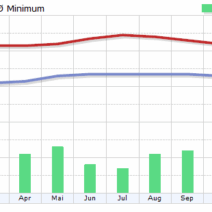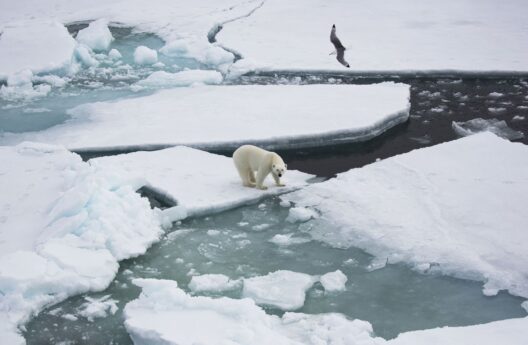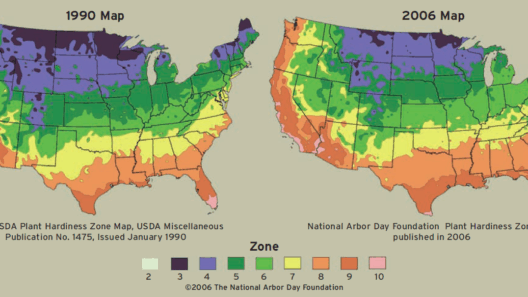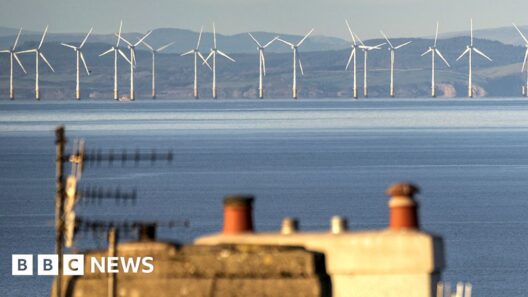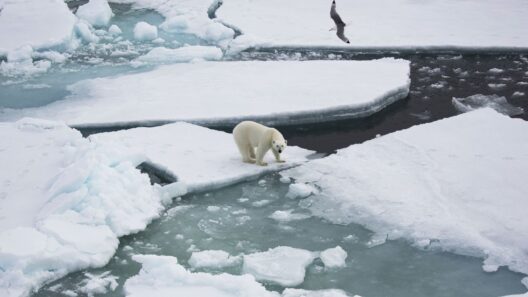Climate change, a term that evokes images of peril, calamity, and extinction, often raises a provocative question: could there be silver linings amidst the storm clouds? It challenges conventional wisdom, leading us to wonder if the ramifications of a warming Earth could present improbable benefits. While the overwhelming consensus within the scientific community highlights the dire consequences of climate transformation, a nuanced exploration of the issue reveals some potential positive outcomes woven through the fabric of this global crisis.
To embark on this multifaceted journey, we must first acknowledge the complex interactions between climate change and various aspects of life on Earth. One may be inclined to consider whether certain ecosystems might experience resurgence in biodiversity as habitats shift or adapt to new climatic conditions. For instance, some previously inhospitable regions may become more suitable for various flora and fauna, fostering ecosystems previously dominated by arid or frozen landscapes. Furthermore, warmer temperatures could enhance agricultural prospects in certain parts of the world, particularly in higher latitudes where growing seasons may extend, allowing for diverse crops to flourish.
However, this tantalizing notion of agricultural abundance begs the question: at what cost? The geographic redistribution of cultivable land is accompanied by the stark reality of significant struggles for food security in regions that become less hospitable due to rising temperatures and altered precipitation patterns. Notably, the mere existence of an opportunity does not translate into guaranteed benefits, especially for vulnerable communities already grappling with the impacts of climate instability.
Additionally, as we delve deeper into the socio-economic ramifications of climate change, it becomes pertinent to consider the technological advancements acting as a byproduct of this pressing challenge. The urgent need for adaptable solutions has catalyzed innovation in sustainable practices and renewable energy technologies. The financial and intellectual investment in green energy systems may ultimately pave the way for economic revitalization and a plethora of job opportunities. Herein lies a potential boon—an invigorated economy that fosters resilience and sustainability as long as the trajectory of innovation remains focused on equitable solutions.
Moreover, revisiting the well-trodden narrative, one might think of nature’s own regenerative capacities. Ecosystems demonstrate remarkable resilience, often bouncing back from adversity. This tenacity presents an intriguing thought: could some species adapt to new conditions in a manner that ultimately strengthens biodiversity? The emergence of species that can tolerate higher temperatures or changing weather patterns might lead to an unexpected diversification in communities. Recognizing the resilience of nature, despite the overwhelming adversity posed by climate change, can evoke a sense of hope. The hidden marvel of ecological evolution shines brightly against the dim backdrop of catastrophe.
Conversely, it is vital to unpack the notion that global warming might engender shifts in human behaviors and priorities. Collective acknowledgment of the impending climate crisis has spurred a growing grassroots movement advocating for environmental stewardship and sustainability. An engaged and informed populace invariably leads to policy changes, encouraging governments and corporations to take bold stances on climate action. This social awakening can potentially act as a catalyst for systemic change, aligning economic policies with sustainable development goals.
Nevertheless, reside we must in an uncomfortable reality: individual consciousness cannot shield us from the multifarious challenges posed by climate change. As we glean insights into potential benefits, it is crucial to remember that these prospects often come hand in hand with unintended negative consequences. The duality of climate change is a formidable juxtaposition, where progress is inextricably linked to uneven repercussions. The fanciful ideal of a thriving world post-climate change can be misleading if we fail to recognize the disparities in resource distribution and access to adaptive technologies.
The question arises—how do we navigate this inherently duplicitous landscape? The answer may lie in fostering adaptive capacity, promoting equity, and advocating for just transitions. Such strategies emphasize collaboration, consensus-building, and an inclusive approach that amplifies marginalized voices. It is imperative to dismantle the exploitative production and consumption patterns that exacerbate inequalities and environmental degradation. In doing so, a symbiotic relationship between humanity and nature could be cultivated, redefining what it means to thrive in a changing world.
As we conclude this exploration of the potential ‘good’ aspects stemming from climate change, it is apparent that the pursuit of knowledge and awareness requires diligent reflection. While there may exist possibilities of positive outcomes—a reinvigoration of biodiversity, agricultural innovation, technological advancements, and a more engaged societal consciousness—these should not obscure the overarching narrative of urgency and peril that climate change embodies.
In the end, the hopeful facets of climate change must serve as a clarion call rather than a panacea. They invite consideration of our choices and actions in shaping tomorrow’s world. By acknowledging the complexity of this global phenomenon, we foster a robust dialogue that empowers us to strive for solutions that transcend mere adaptation. It compels us to envision and build a future where humanity flourishes harmoniously with the natural world, recognizing that each small gain achieved must be preserved within the larger context of overcoming the existential threats climate change poses.
